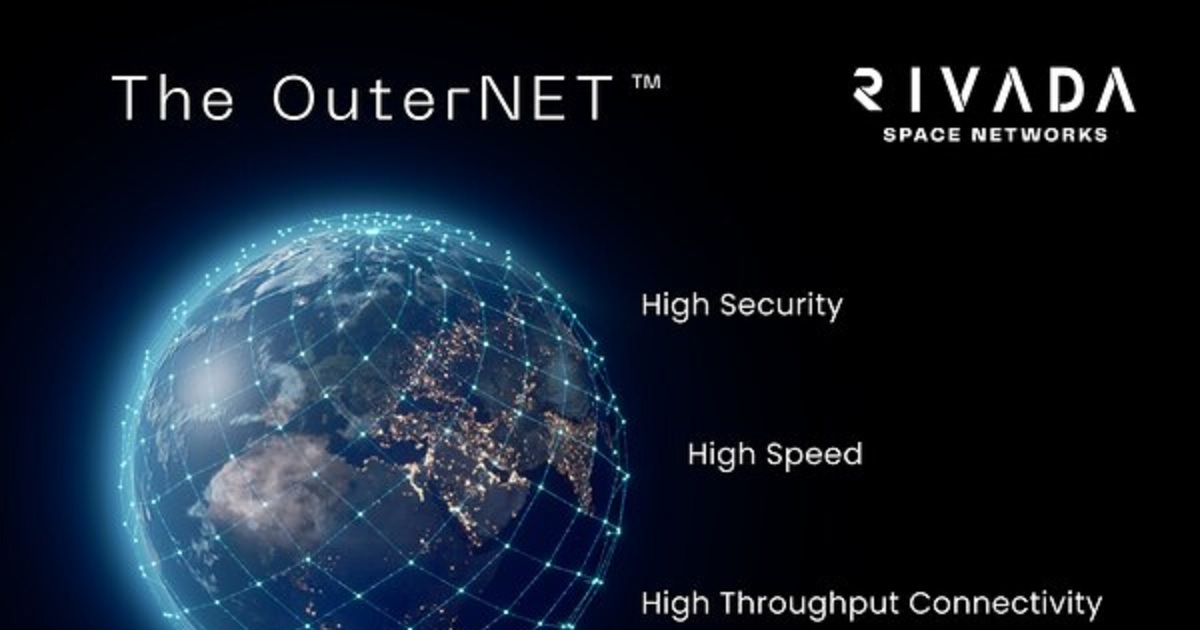
Network Security
PR Newswire | January 25, 2024
Cato Networks, the leader in SASE, announced the expansion of the Cato SASE Cloud platform into threat detection and incident response with Cato XDR, the world's first SASE-based, extended detection and response (XDR) solution. Available immediately, Cato XDR utilizes the functional and operational capabilities of the Cato SASE Cloud to overcome the protracted deployment times, limited data quality, and inadequate investigation and response experience too often associated with legacy XDR solutions.
Cato also introduced Cato EPP, the first SASE-managed endpoint protection platform (EPP/EDR). Together, Cato XDR and Cato EPP mark the first expansion beyond the original SASE scope pioneered by Cato in 2016 and defined by industry analysts in 2019. SASE's security capabilities encompassed threat prevention and data protection in a common, easy-to-manage, and easy-to-adopt global platform. With today's announcement, Cato is expanding SASE into threat detection, incident response, and endpoint protection without compromising on the architectural elegance captured by the original SASE definition.
"Cato SASE continues to be the antidote to security complexity," says Shlomo Kramer, CEO and co-founder of Cato Networks. "Today, we extend our one-of-a-kind SASE platform beyond threat prevention and into threat detection and response. Only Cato and our simple, automated, and elegant platform can streamline security this way."
An early adopter of Cato XDR is Redner's Markets, an employee-owned supermarket chain headquartered in Reading, Pennsylvania, with 75 locations. Redner's Markets' vice president of IT and Infrastructure, Nick Hidalgo, said, "The Cato platform gave us better visibility, saved time on incident response, resolved application issues, and improved network performance ten-fold." (Read more about Redner's Markets and Cato in this blog.
"The convergence of XDR and EPP into SASE is not just another product; it's a game-changer for the industry," said Art Nichols, CTO of Windstream Enterprise, a Cato partner. "The innovative integration of these capabilities brings together advanced threat detection, response capabilities, and endpoint security within a unified, cloud-native architecture—revolutionizing the way enterprises protect their networks and data against increasingly sophisticated cyber threats." (Read more about what Cato partners are saying about today's news in this blog.)
Platform vs. Product: The Difference Matters
Cato XDR takes full advantage of the enormous benefits of the Cato SASE Cloud platform, the first platform built from the ground up to enable enterprises to connect, secure, and manage sites, users, and cloud resources anywhere in the world.
Unlike disjointed point solutions and security appliances, Cato capabilities are instantly on, always available at scale, and fully converged, giving IT teams a single, shared context worldwide to understand their networks, prevent threats, and resolve problems. As an autonomous platform, Cato SASE Cloud sustains its evolution, resiliency, optimal performance, and security posture, saving enterprises the operational overhead of maintaining enterprise infrastructure. Enterprises simply subscribe to Cato to meet their business needs.
Cato's cloud-native model revolutionized security and networking operations when it was introduced in 2016, a fact validated three years later in 2019 when the Cato approach was formally recognized by the industry as SASE.
Breach Times Still Too Long; Limitations of Legacy XDR
Cato is again revolutionizing cybersecurity with the first SASE platform to expand into threat detection, empowering security teams to become smarter and remediate incidents faster.
The flood of security alerts triggered by network sensors, such as firewalls and IPS, complicates threat identification. In 2023, enterprises required 204 days on average to identify breaches.1 XDR tools help security analysts close this gap by ingesting, correlating, and contextualizing threat intelligence information with the data from native and third-party sensors.
However, legacy XDR tools suffer from numerous problems relating to data quality. Sensor deployment extends the time-to-value as IT must not only install the sensors but also develop a baseline of specific organizational activity for accurate assessments. Data quality is also compromised when importing and normalizing third-party sensor data, complicating threat identification and incident response.
Security analysts waste time sorting through incident stories to identify the ones most critical for immediate remediation. Once determined, incident remediation is often hampered by missing information, requiring analysts to master and switch between disparate tools. No wonder in 2023, average breach containment required more than two months.1
Cato XDR and Cato EPP Expands the Meaning of SASE
Cato XDR addresses legacy XDR's limitations. Instantly activated globally, Cato XDR provides enterprises with immediate insights into threats on their networks. Incident detection is accurate due to Cato's many native sensors – NGFW, advanced threat prevention (IPS, NGAM, and DNS Security), SWG, CASB, DLP, ZTNA, RBI, and now EPP/EDR. Powered by Bitdefender's world-leading malware prevention technology, Cato EPP protects endpoints from attack – in the Cato way. Endpoint threat and user data are stored in the same converged Cato data lake as the rest of the customer's network data, simplifying cross-domain event correlation.
The result is incredibly high-quality data that improves the incident identification and remediation process. Cato AI uses the data to accurately identify and rank incidents, empowering analysts to focus critical resources on an organization's most important remediation cases. Cato AI is battle-tested and proven across years of threat hunting and remediation handling by Cato MDR service agents.
Remediation times reduce as detected incident stories contain the relevant information for in-depth investigation. Cato's tools sit in the same console as the native engines, enabling security analysts to view everything in one place -- the current security policy and the reviewed story.
Finally, incident reporting is simplified with generative AI. Purpose-built for investigations, this natural language engine provides human-readable explanations of incident stories. Analysts save time sharing incident information with other teams and reporting to their managers.
Read More

Network Infrastructure
PRWeb | October 25, 2023
AireSpring, a leading global managed services provider and next generation aggregator specializing in Managed IT, Network Services, and Unified Communications, is pleased to announce that it now offers Fortinet's Managed SASE SD-Branch solution comprised of FortiGate Next Generation Firewall (NGFW) with SD-WAN, FortiAP Secure Wi-Fi Access Points, and FortiSwitch Secure Ethernet Switches.
The complete solution now includes fully integrated and Managed Wi-Fi access points and switches for users and infrastructure accessing the internet and cloud applications—a necessity in today's business environment. With built-in security, intelligent application visibility and control, and streamlined compliance, Managed Fortinet SASE SD-Branch protects networks against threats while ensuring productivity and simplified network management. The solution helps solve local connectivity challenges and Wi-Fi interference and congestion issues--all managed under a single pane of glass, thus reducing the strain on IT teams. AireSpring's Managed Fortinet's SD-Branch solution offers a host of features and benefits, including:
Cloud-native and cloud-hosted with end-to-end visibility.
Unified management to simplify operations and ensure consistent policy enforcement and compliance.
Seamless deployment, indoors and outdoors.
A user-friendly interface.
Simplified electrical power and Wi-Fi setup.
Mesh networking to distribute Wi-Fi access across large spaces.
Tri-Band Radio Access Point for connectivity using different frequencies.
Optional on-site field services for site surveys, installation, and wiring.
Optional LTE-based backup Managed Wireless WAN connection.
Real-time proactive monitoring and remediation through our 24/7/365 network operations center.
We're thrilled to introduce Fortinet's Managed Wi-Fi Access Point and Switch solution to our partners and their customers, stated AireSpring CEO Avi Lonstein. This industry-leading product is indispensable in today's Wi-Fi-reliant environment and, along with our personalized customer service, speaks to AireSpring's commitment to delivering crucial, customized solutions to enterprises with unique business needs.
About AireSpring
Founded in 2001, family owned and operated AireSpring is an award-winning global managed services provider and next-generation aggregator specializing in Managed IT, Network Services, and Unified Communications, serving thousands of businesses worldwide. AireSpring provides fully managed and connected end-to-end, next-generation solutions and personalized customer service to multi-location enterprise customers. Services include Global Managed SD-WAN and SASE, Managed Security, Unified Communications, SIP Trunking, and Global Business Internet. AireSpring offers its solutions through a diversified network of channel partners that includes technology solutions distributors (TSDs), managed service providers (MSPs), and value-added resellers (VARs).
As part of its fully managed solution, AireSpring provides access to hundreds of carriers and cable companies in the US and around the globe, delivering a seamless single-source solution with one bill and one point of contact for AireSpring partners and their customers.
Read More

5G
PR Newswire | January 07, 2024
Rivada Space Networks, a global network company launching a constellation of 600 low-earth-orbit satellites (LEO) to enable secure, global connectivity for governments and enterprises, is partnering with Wiseband, an Emirati satellite services company, to bring secure connectivity solutions to the Middle East region.
Based in UAE and operating across the Middle East and Africa, Wiseband provides customized private satellite networking solutions which are designed to meet high-performance and stringent security requirements. The company currently has connectivity projects in UAE, KSA, Kuwait and Egypt.
Rivada's global low-latency point-to-point orbital network, the OuterNET™, is a unique next-generation constellation combining inter-satellite laser links with advanced onboard processing to provide unique routing and switching capabilities and create an optical mesh network in space. This orbital network, in which data stays in space from origin to destination, creates an ultra-secure satellite network with pole-to-pole coverage, offering end-to-end latencies lower than terrestrial fiber over similar long distances. And by routing traffic on a physically separated network, it provides a layer of defense for any organization that needs to securely share data between widely distributed sites.
For Enterprise and Government communications, Rivada's OuterNET™ will provide an easy-to-deploy network with higher bandwidth and improved security for resilient and more reliable communications services.
Rivada Space Networks is showcasing the OuterNET™ at the Middle East Space Conference, in Oman from 8th-10th January. Rivada's CEO Declan Ganley will participate in the panel exploring how new satellite networks can play an essential role in bringing connectivity to the Middle East and the prospects for satellite communications services in the region, including:
• How the potential of LEO can be unlocked for data networks and services and the opportunities for new business models and end-user services
• An ultra-secure network is the ambition for global enterprise and government communications and the dynamic powers of laser communications are key
• Partnering with LEO enables Middle Eastern satellite and telecom operators in search of growth to complement and expand services that cannot be supported by GEO alone
Ahmed Hassan, CEO of Wiseband, said: "Wiseband is looking to tap onto Rivada Space Networks' highly secure point-to-point secure communications network to provide advanced and customizable secure solutions to our existing enterprise customers and to develop the emerging markets in Middle East. The OuterNET™ is a fully interconnected orbital network which effectively serves as a private network in space, capable of routing traffic at gigabit speeds from one satellite to another with no need for a gateway on earth. We see this as the key infrastructure for the development of the enterprise and government sectors in the Middle East and beyond."
Declan Ganley, CEO of Rivada Space Networks, said: "We are delighted to be partnering with Wiseband based on their long history and expertise in serving the telecoms sector in Middle East region. Rivada'sOuterNET™ is what data communications has been waiting for – a game-changing constellation that re-defines connectivity in terms of security, latency, capacity, efficiency, and coverage. As a completely new type of LEO constellation, the OuterNET™ can provide the Middle East region with a next-generation infrastructure for secure, resilient communications and network expansion."
About Rivada Space Networks
Rivada Space Networks GmbH is deploying the first true "OuterNET™": a global low latency point-to-point connectivity network of LEO satellites. By connecting its satellites with lasers, Rivada Space Networks will provide resellers and B2B customers with the ability to securely connect any two points on the globe with low latency and high bandwidth. The constellations, comprising 600 low-earth-orbit communications satellites, will represent a fundamental change in the availability of secure, global, end-to-end enterprise-grade connectivity for Telecom, Enterprise, Maritime, Energy and Government Services markets. Rivada Space Networks is a wholly owned subsidiary of Rivada Networks,
Read More